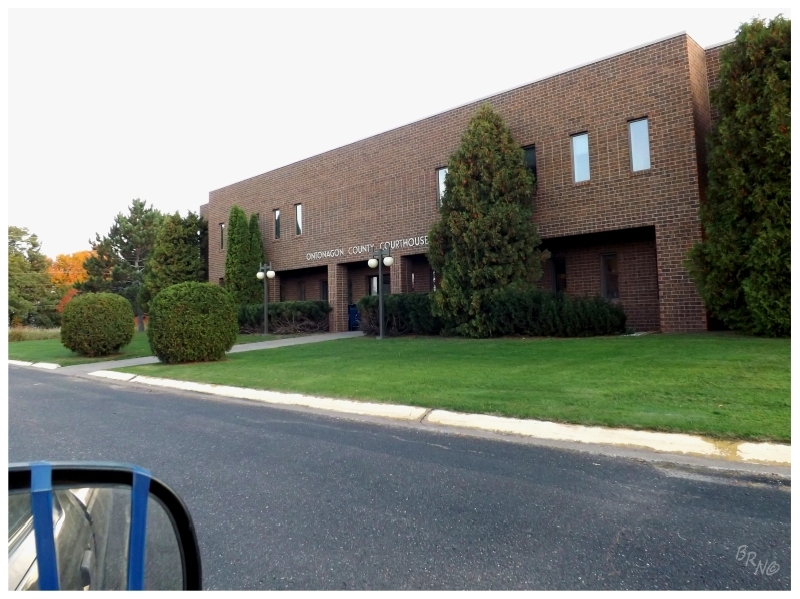
Ontonagon taught me a valuable lesson which really should be driven into my head by now...
The night before, as I sat on my backside and watched Mitt Romney and Nick Markakis lose; Nailhed went for a walk. I would get up to grab another beer and peer out at the Ontonagon streets, then decide to sit back down.
It wasn't until I was home that I realized how close I was to Ontonagon's old county courthouse, built in 1886. It stands so close to the Inn Towne Motel, that I can hardly believe I didn't notice the window peaks or the domed roof peak from one block away.
Instead, I clumsily fed my face the next morning as we pulled up to Ontonagon's newer county courthouse, built 1980.
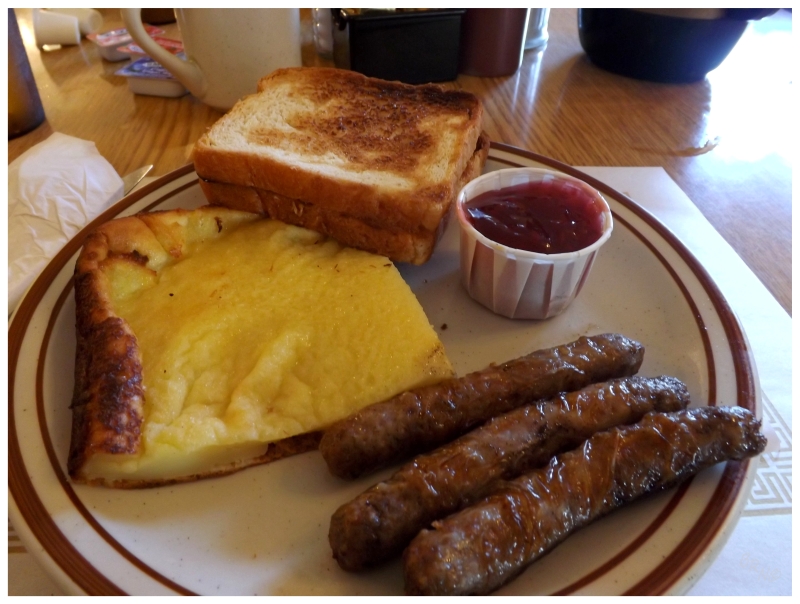
From Ontonagon, we went northeast onto the Keweenaw Peninsula; a finger of land stretching into Lake Superior just about as north as you can go in Michigan (save for Isle Royale).
We stopped for breakfast in Houghton, where you'll find one of Nailhed's favourite restaurants in one of his favourite cities - the Suomi Bakery. All of this copper mining history of which I've been posting picture after picture in this saga, means that thousands of Finns came across the Atlantic in search of a better - although strangely similar - life in the Upper Peninsula. Their influence remains evident to this day, in that you have places like the Suomi Bakery.
Excited to discover what a Finnish breakfast entailed, I ordered the pannukakku - oven roasted pancake with custard.
Now if it was more easily accessible, or if I found myself in Houghton more often, I would order the pannukakku quite a bit. It wasn't out of this world to the point where I immediately booked a flight to Helsinki; but it was good.
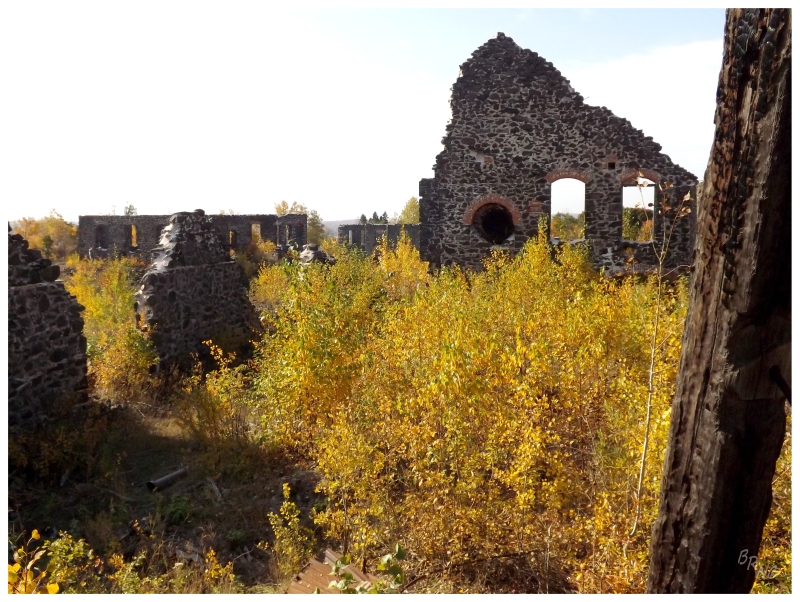
Quincy No. 2 Boilerhouse (1882). The No. 4 Hoisthouse (1885) and the No. 7 Boilerhouse (1898) in the background.
Moving along, driving up the Keweenaw Peninsula was never in our original plans, but yesterday we discussed what was still remaining. Nailhed reasoned that we should start heading towards home, as he outlined what he thought were the remaining days.
Suddenly he realized we had an extra day that he somehow miscalculated (I thought he was leaving a buffer day).
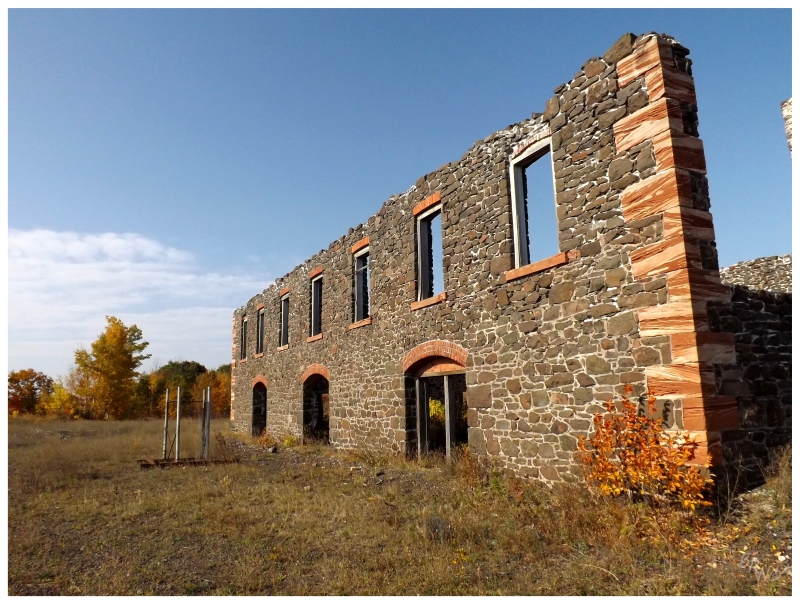
Quincy No. 7 Boilerhouse (1898)
So we stopped at places like the Quincy Mine, haphazardly throwing a day together.
After seeing Nailhed's pictures of this place a few years ago, I always wished I would have simply went a little past Hancock on my own journey up here in 2007.

Blacksmith Shop (1900)
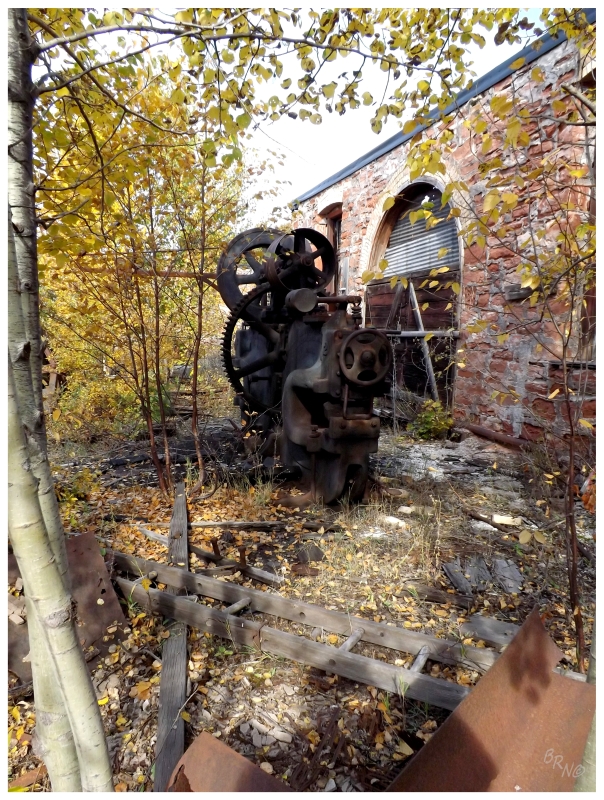
Blacksmith Shop (1900)
I remembered the first few buildings from his pictures, but then we went up to the road and the buildings kept coming & coming...
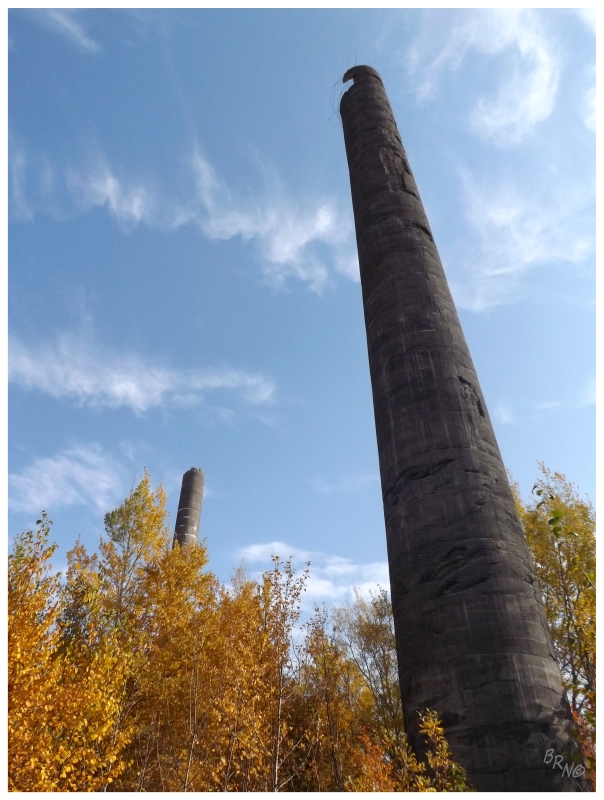
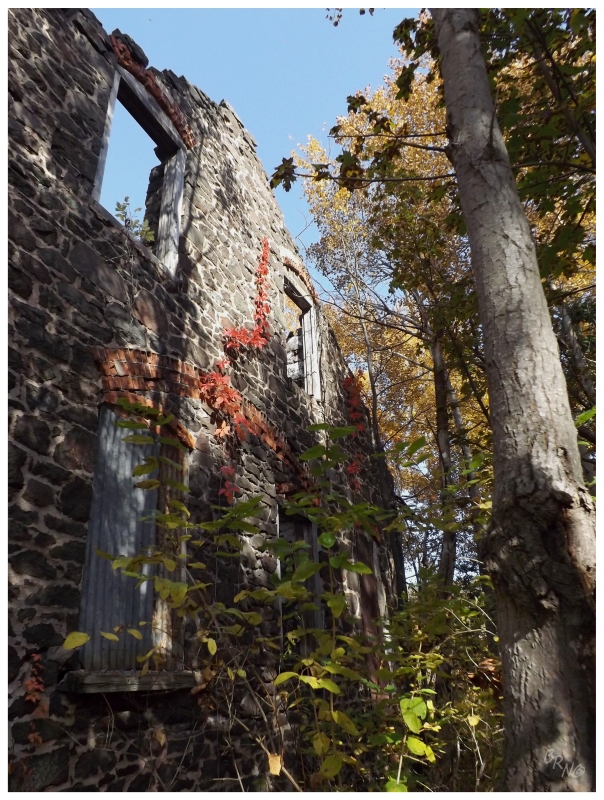
North Quincy (No. 6) Dry House(?) (pre-1890)
The Quincy Mine operated between 1846 and 1945, with smelting operations continuing into the early 1970s. It was the country's leading mine in terms of copper production for a few years in the 1860s, but would be superseded by the Calumet & Hecla Mine shortly after.
It would remain a reliable source for many years thereafter (even if it didn't surpass the Calumet & Hecla Mine in terms of production).

Some of these old mine sites can be incredibly dangerous in terms of unmarked shafts, but with the Quincy Site being a National Historical Park, there are safety measures in place.
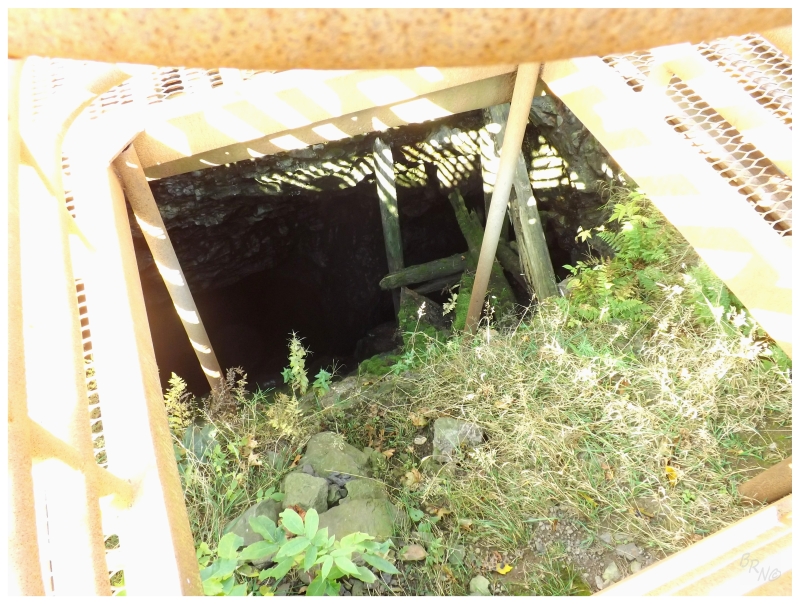
If you somehow manage to squeeze through, you aren't coming back.
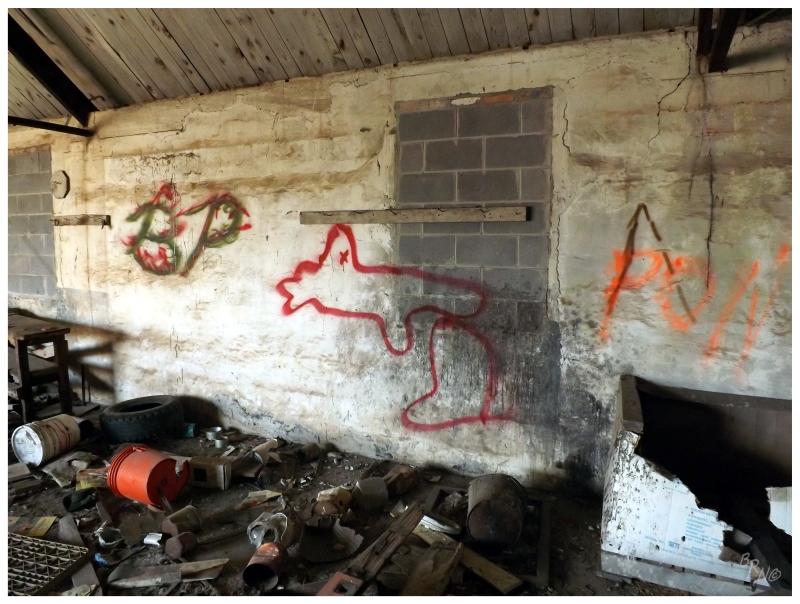
We continued up the road to the Mesnard Mine/Quincy No.8 Headframe, but since Nailhed climbed it and I didn't, there's no reason for me to post pictures looking up from the ground.
Although I can't help but post the greatest piece of Michigan graffiti ever, which I discovered in a nearby building.

About 10 miles away, we found the ruins of the Calumet Brewery.
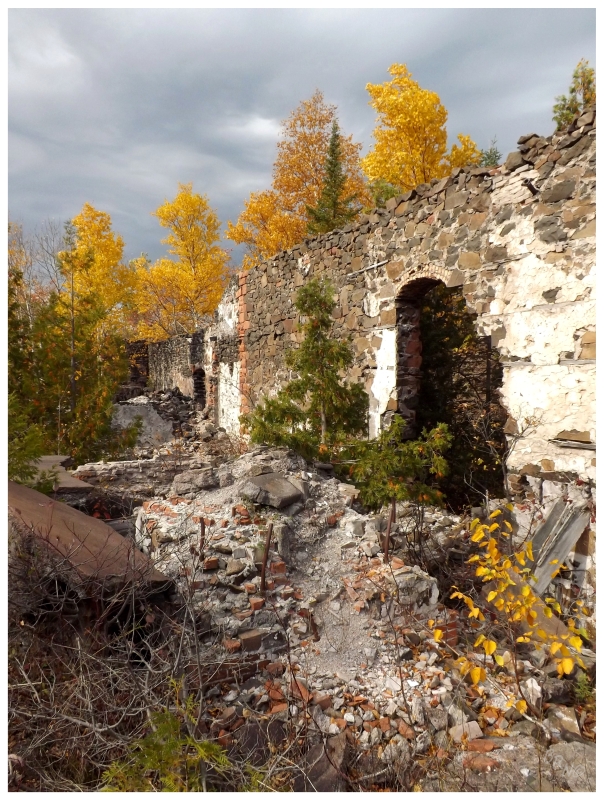
It wasn't very late in the day, but since the sky was looking mean, I rushed towards the brewery, through the shrubs and loose brick.
There was nothing leftover that would tell me this was a brewery (well, except for Nailhed). It was pleasing to know of its history in the moment though, as it was neat to explore a non-mining related building, seeing as I have a better understanding of how a brewery works, than say a mining dry house.

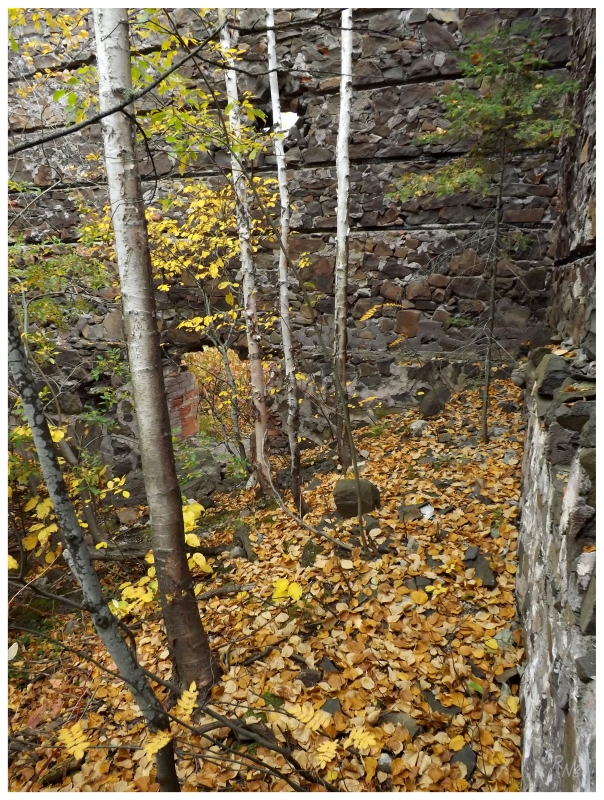
I've always liked the appearance of these old stone buildings of the U.P., created with the displaced stone from the mining process. (I'm sure you can tell by the number of pictures in these updates.)
Realize that I left dozens of pictures on the cutting room floor, as I scurried along like Newman with mulligatawny, happily snapping pictures of golden leaves and decorative archways.
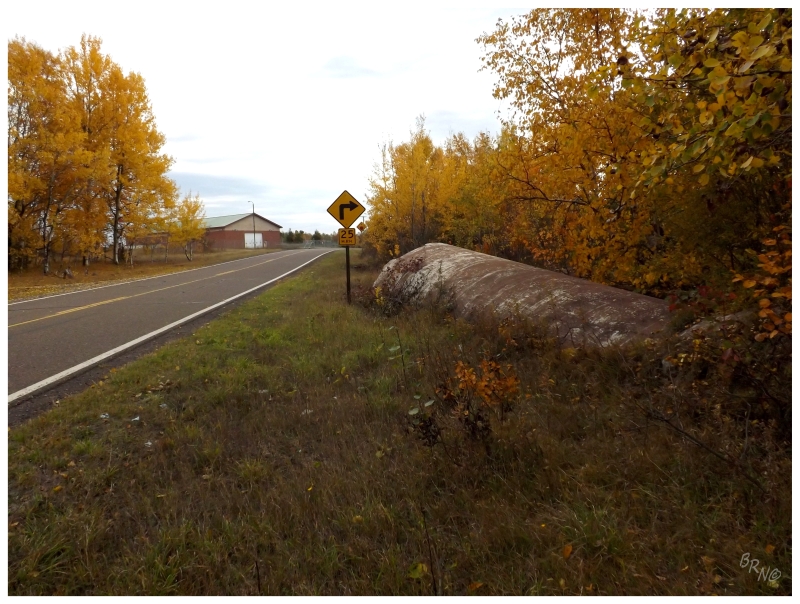
On the way back from the Calumet Brewery there was a smokestack ruin beside the road - you know, just a roadside smokestack ruin, no big deal, everyday occurrence.
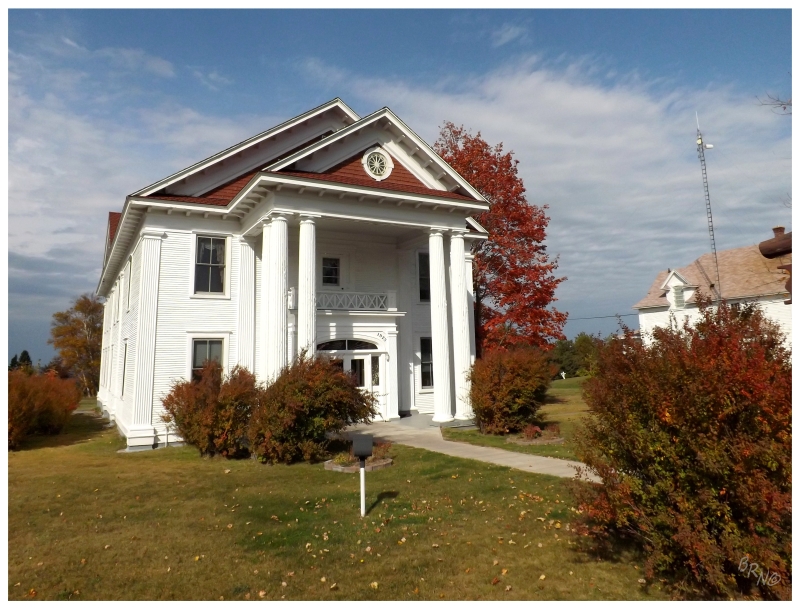
Driving north from Calumet, we moved through a series of villages, passing intriguing, weathered buildings with regularity. As I craned my neck and watched the passing communities, we soon found ourselves at the shores of Lake Superior in the Keweenaw County seat of Eagle River.
Stopping to get Michigan's northernmost County Courthouse, I was delighted with the quaint, signed Senior's Parking out front, the fantastic weather here along Lake Superior and the fact that I wasn't just getting a hard to reach county courthouse, but also quite an attractive one!
In Buildings of Michigan by Eckert, she makes great points in that this building would fit in any public square of a small New England town. It is surrounded by 3 foot walls to create courthouse grounds and it has doric columns and a prominent piedmont - elements of great formality for a town which served as the rural, isolated shipping port for nearby mines.
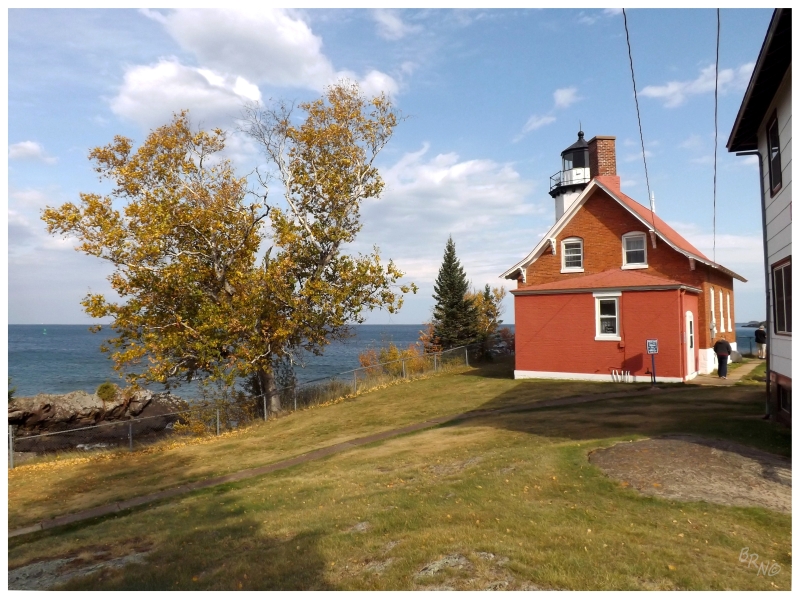
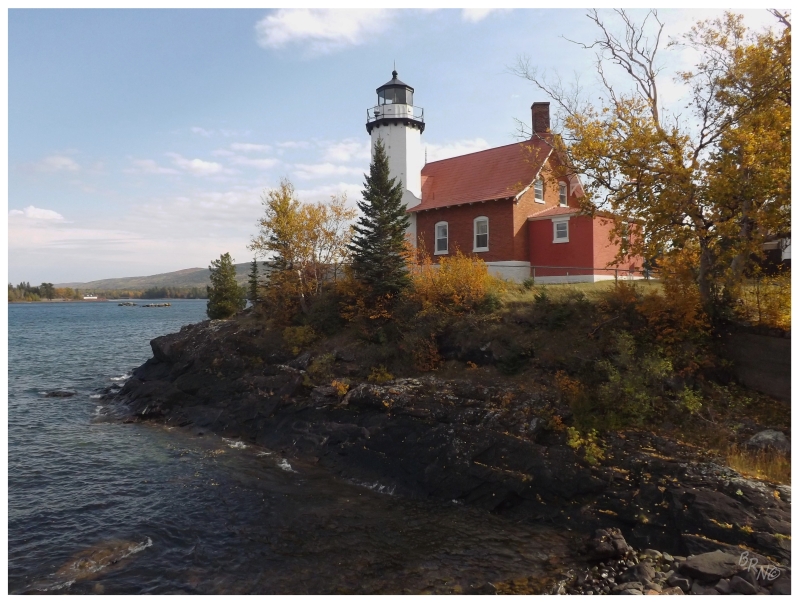
We continued up the coast, passing enticing shores, except for Gitchu Gumee's surely frigid temperature.
Coming to Eagle Harbor, we pulled into a lighthouse Nailhed had seen before, but I had obviously not.
Marking the narrow western entrance to the oval Eagle Harbor, the Eagle Harbor Lighthouse has guided mariners up the Keweenaw Peninsula since 1871 (and the first Eagle Harbor Light guided them between 1851 and 1871).
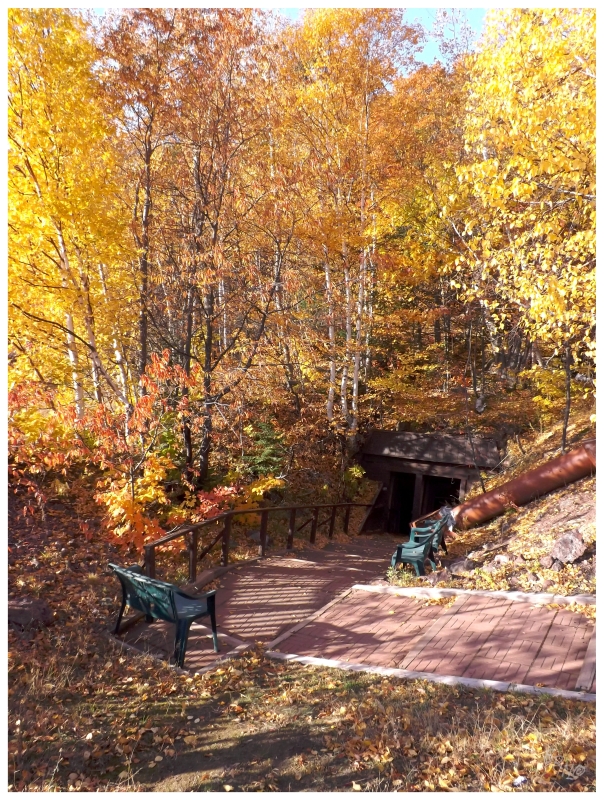
After cruising the Brockway Mountain Drive and going to the overlook in Copper Harbor, we returned inland towards the Delaware Mine.
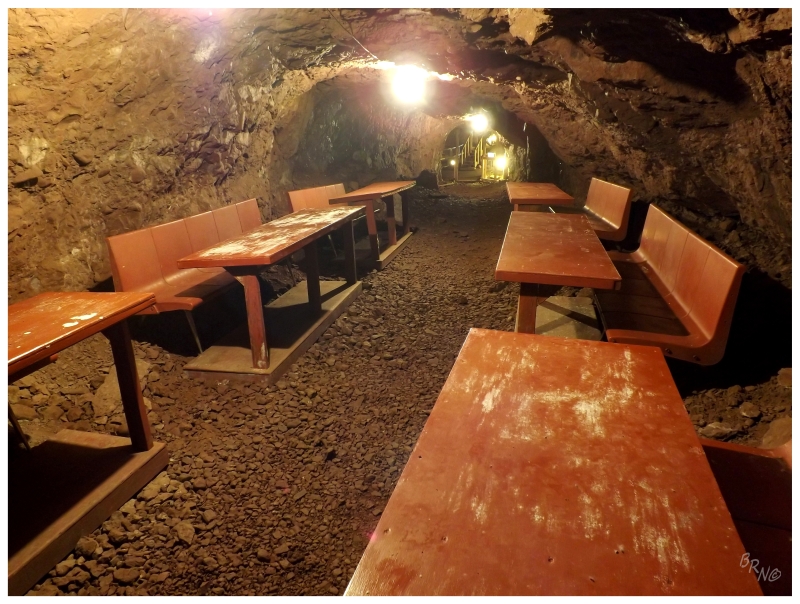
The Delaware Mine is one of the Yoopee mines you can actual tour (along with the Quincy & Adventure mines). Nailhed had only been on the Adventure Mine tour, so this was exciting as the Delaware Mine was uncharted territory!
And if we only had packed a dinner, we could have sat underground for an interesting dining experience!
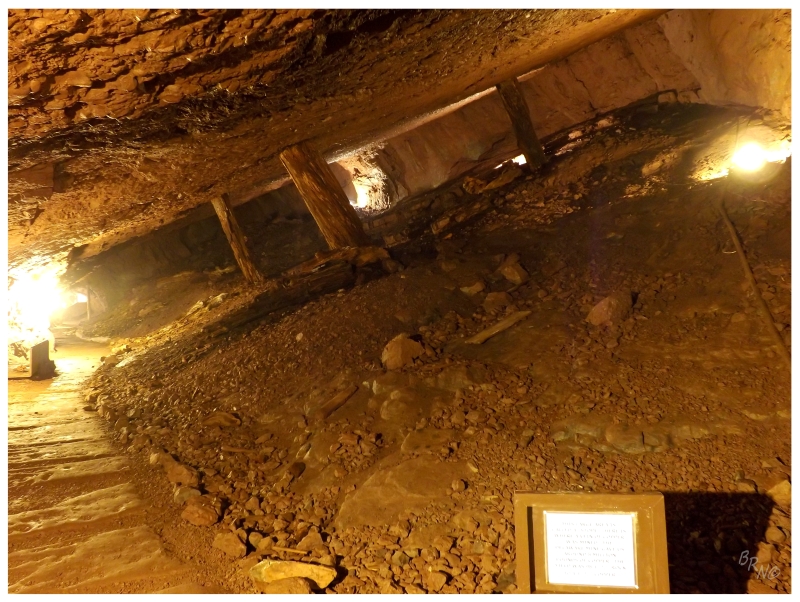
The lack of food did not make me take horribly crooked pictures - this looks up what is known as a stope, an area where the ceiling is strong enough to allow you to mine minerals at an angle.
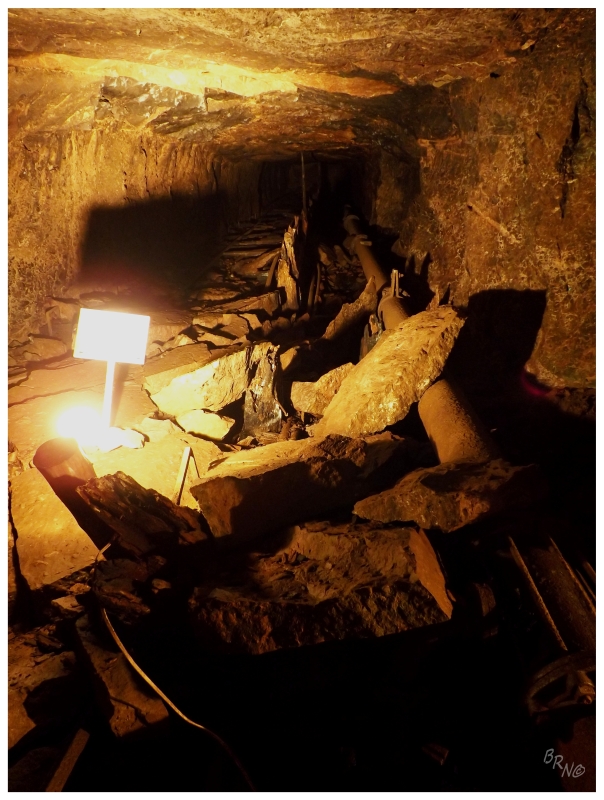
The underground portion of the Delaware Mine was great, but of course this was the moment my camera batteries started dying. Trying to ring out a few last shots, I made enough pictures to be happy with walking down the 100 stairs into the mine.

What I never knew & what Nailhed never realized...was how fantastic the surface buildings were in addition to the underground tours!

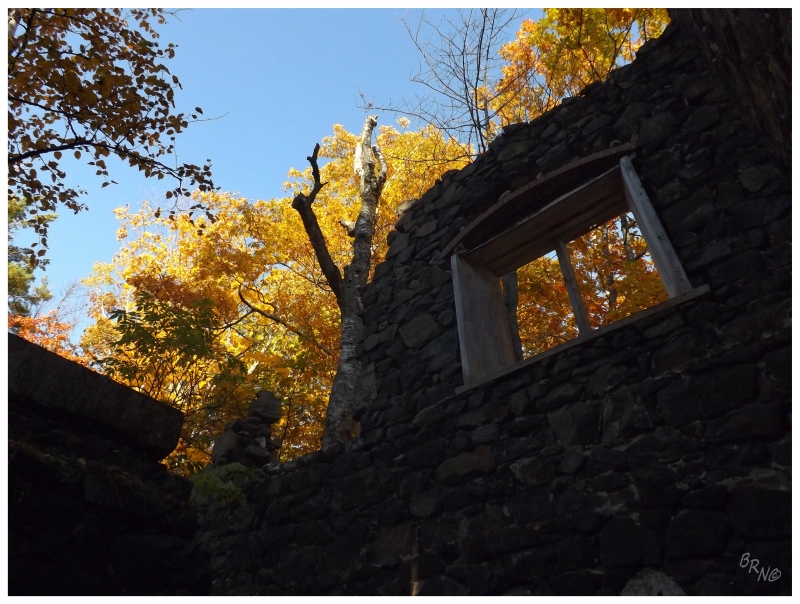
The two of us zigzagged, grabbing picture after picture of the stone walls reaching skyward.

I'm not sure how the Delaware Mine survives based on the few people we saw there that day, but I wish them all the best as their grounds were just splendid.

Our day would end after Calumet, a place I was intrigued with earlier when we stopped so Nailhed could steal wifi.
Nail parked beside a coffee shop, and needing another coffee I wandered inside. Realizing it was a restored service station, this made me quite happy. I came outside and appreciated the nearby Calumet Theatre, before resting my coffee on Nailhed's truck and making my way over to a party store. Inside there, I noticed pressed tin ceilings and a worn floor, wondering to myself about how a party store could afford to be in an old building, but more so, in how amazing the party store actually was, period.
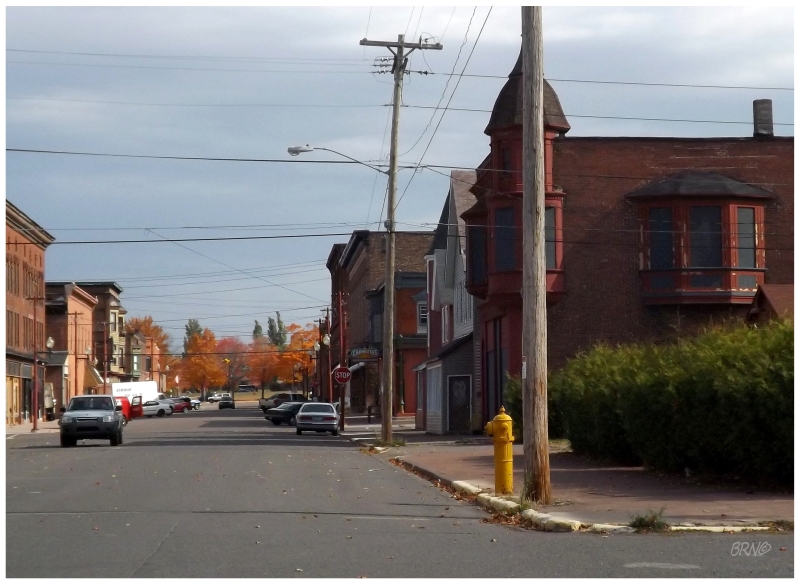
I had been impressed enough with Calumet in just our short drive, but it was now really starting to shine as I found myself on foot.
The few pictures I snapped of Calumet don't even start to show the opulent and surprising buildings located up here. The reason for such opulence is the same reason I've had all of these ruins to post - the copper industry. The city's Calumet & Hecla Mine was a mining heavyweight in Copper Country, producing over 1/2 of the U.S.'s copper between 1871 and 1880. This wealth would extend into the 1910s, with decades of construction done by the Calumet & Hecla Mining Company. They provided schools, libraries, subsidiaries for religious institutions, hospitals, a bathhouse, etc. - all to improve the lives of the nearly 100 000 people residing in Calumet Township at the time.
Eventually Calumet collapsed like the rest of the places dedicated to copper mining.
So now you have a place of stunning, century-old buildings, in a geographically-isolated area with a severely reduced population, trying to do what they can to preserve Calumet (they are helped slightly by the Keweenaw National Historical Park providing money & resources).
The population of Calumet Township in 2000 was a shade under 7000 people.
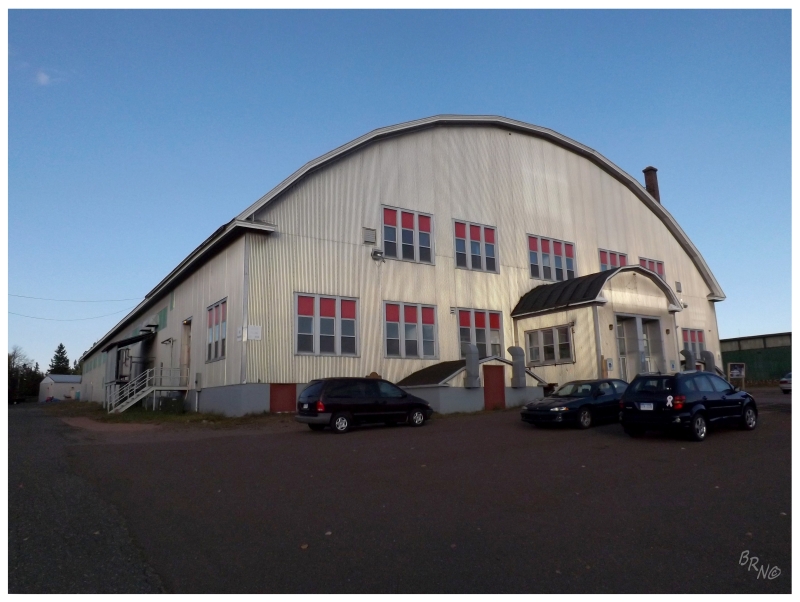
Calumet Colosseum, built in 1913, the oldest operating hockey rink in the world.
I fantasized about spending a month in Calumet & I've thought about it ever since. Ahhh, bucket list items.
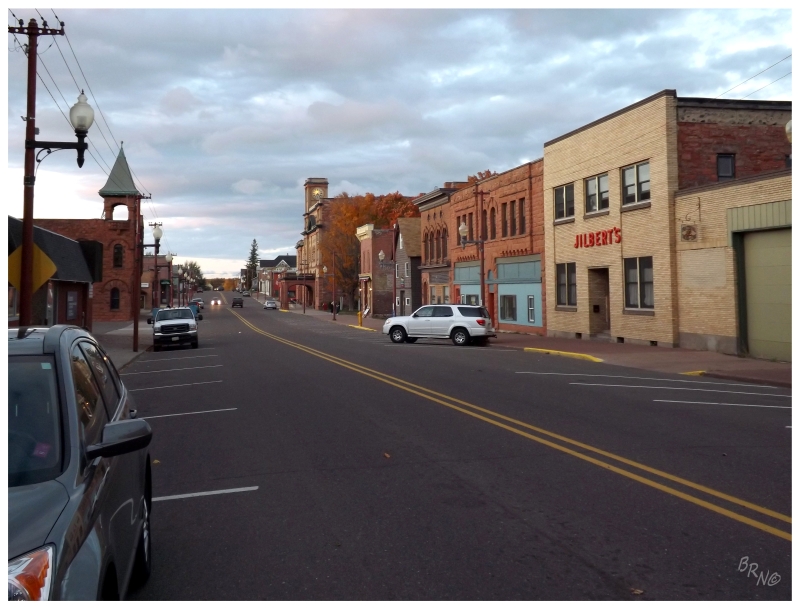
So far, the closest I would come to living the Calumet life is going to the Michigan House for dinner. Nailhed wondered if I wanted to try Calumet's Carmelita's Southwestern Grill, but I wanted the historic tavern, even if it meant a couple more dollars in cost.
And so we went to the Michigan House Brew Pub, originally the Michigan Hotel, built by Bosch Brewing in 1905 to schmooze incoming clientele and travelers arriving by rail. The 1906 mural created on the ceiling behind the bar was a sight to behold, which the two of us did as we relaxed over pints and delicious burgers.
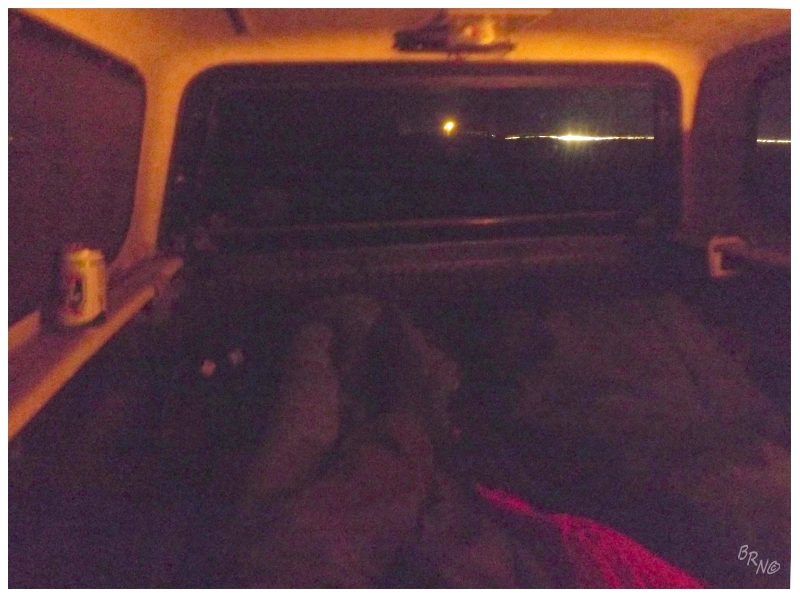
With it being dark but neither of us being tired, we made an hour's worth or progress to the south.
Just outside of Baraga, we pulled into a tiny rest area. Nail would read maps and I'd read about Michigan lighthouses, while we had a few Old Styles before catching some sleep.
Continue to Part 6!